Smoking and Tobacco
Smoking Ants
The earliest report I can find of people in the Persian Gulf smoking ants is the one below, from 1994. But news stories have continued to report this practice. This one from 2008 explains that it's specifically the red samsun ant that's smoked, and explains, "Smoking the red ant gives a similar sensation to smoking marijuana and sniffing glue because of the high concentration of formic acid found in the ants."
Honolulu Advertiser - Sep 11, 1994

Brachyponera sennaarensis
Image via antweb
Posted By: Alex - Sat Jan 06, 2018 -
Comments (7)
Category: Drugs, Smoking and Tobacco
Reg on Smoking
In the early 1990s, Regal cigarettes in the UK launched an advertising campaign that featured an everyman named Reg who offered his dad-humor insights on various subjects.The first ad read, "Reg on Smoking: I smoke 'em because my name's on 'em." As he held his fingers over the 'al' in Regal.
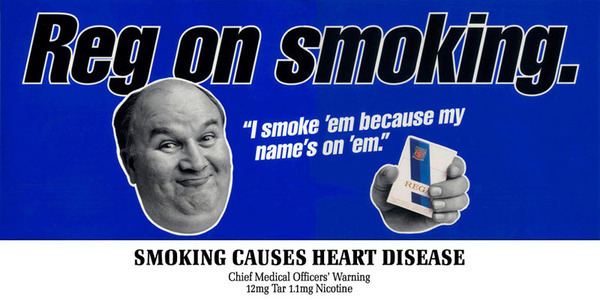
Other insights followed.
Reg on train-spotting: "There's one."
Reg on party politics: "If you drop ash on the carpet you won't get invited again."
But the campaign was eventually banned because medical researchers discovered that the stupid humor of the ads appealed mostly to young adolescents, whereas adults 33-55 years old, who were supposedly the target group for the campaign, didn't identify much with Reg.
Below are all the other examples of Reg ads that I could find online.
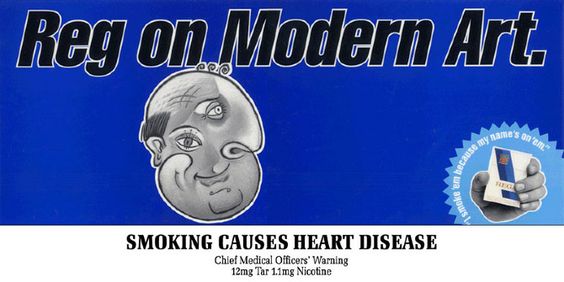
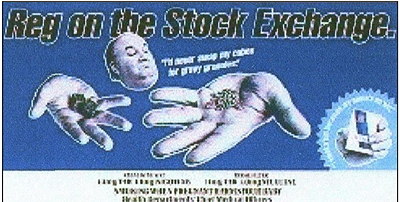
Reg on the Stock Exchange: I'd never swap my cubes for gravy granules
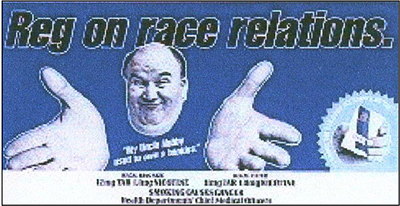
Reg on Race Relations: My Uncle Nobby used to own a bookies
More info: JimHagart.com, "Cigarette advertising and children's smoking: why Reg was withdrawn".
Update: A few more insights from Reg.
Reg on taxes: "Too many cabs drive too fast."
Reg on the Exchange Rate Mechanism: "Erm."
Reg on television: "No, I'm not. I'm on a poster."
Reg on the greenhouse effect: "My tomatoes seem to grow better under glass."
Reg on the meaning of life: "Depends if you get time off for good behaviour."
Posted By: Alex - Wed Aug 30, 2017 -
Comments (1)
Category: Advertising, Smoking and Tobacco, 1990s
Self-Lighting Cigarettes
Self-lighting cigarettes seem to be an idea that inventors keep dreaming up, not realizing that the idea has already been tried. The basic problem with them is identified in this thread on the Guardian. Either the head of the cigarette rips off as you try to light it, or it doesn't light and you're left with a smashed-up cigarette.Also, although I'm not a smoker, it seems like a problem that doesn't need a solution. I get the sense that smokers like the ritual of lighting their ciggies.
More in extended >>
Posted By: Alex - Mon Aug 14, 2017 -
Comments (3)
Category: Inventions, Smoking and Tobacco
Marlboro Beer
In the early 1970s, there was briefly such a thing as Marlboro Beer (trademark registration). Philip Morris (having just acquired Miller Brewing) figured that many people like to smoke as they drink beer, so surely a beer that shared the same brand name as their best-selling cigarette would be a success. But apparently test marketing indicated otherwise. So that was the end of Marlboro Beer.The few bottles of it that were sold now fetch a high price (as much as $1000) as collector's items.
via Box Vox 1
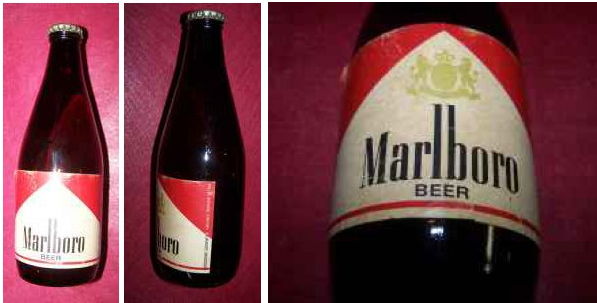
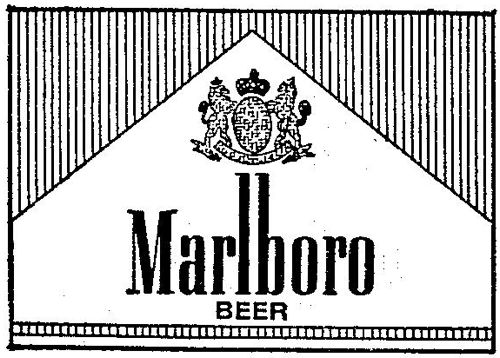
Posted By: Alex - Mon Nov 21, 2016 -
Comments (4)
Category: Smoking and Tobacco, 1970s, Alcohol
Tandem Smoker
Introduced in 1955: Jonathon Law's Tandem Smoker, aka the "sure-fire lonesomeness ender.""The inventor envisions each lonely man packing a Tandem Smoker. All he has to do is light up, offer a passerby a mouthpiece, and the device will do the rest."

Image source: Fuzzy Dave

Independent Press Telegram - Sep 30, 1956

And you too could soon be smoking in tandem, because there's one available for $95 on eBay.
Posted By: Alex - Mon Nov 14, 2016 -
Comments (5)
Category: Smoking and Tobacco, 1950s
Dakota Cigarettes for the Virile Female
In 1990, R.J. Reynolds test marketed a new brand of cigarette named "Dakota." But the brand immediately generated controversy when internal company documents leaked to the Washington Post revealed that the cigarettes were narrowly targeted at a demographic described as "virile females."What exactly is a "virile female"? It was apparently "a woman with no education beyond high school, whose favorite television roles are Roseanne and 'evening soap opera (bitches)' and whose chief aspiration is 'to get married in her early 20s' and spend her free time 'with her boyfriend doing whatever he is doing.'"
The phrase "virile female" attracted a lot of interest. Many people wondered if it was acceptable English. Language columnist William Safire weighed in on the issue, asking, "Can you use virile woman without committing an oxymoronic act?" He concluded, yes you can:
He further noted that there was literary precedent for the phrase:
However, even though Safire had officially approved the phrase "virile female," the cigarettes themselves didn't perform well in the test marketing, so Reynolds scuttled the brand.
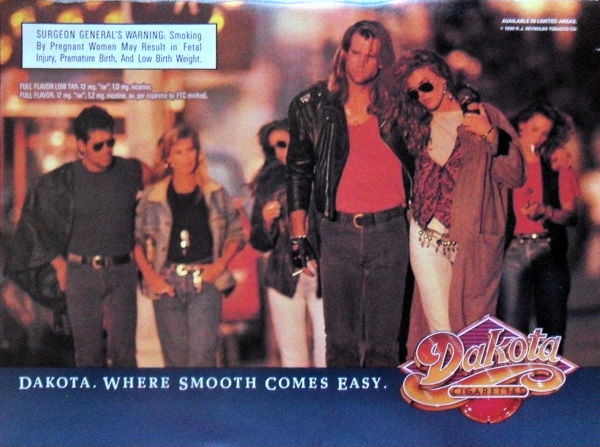

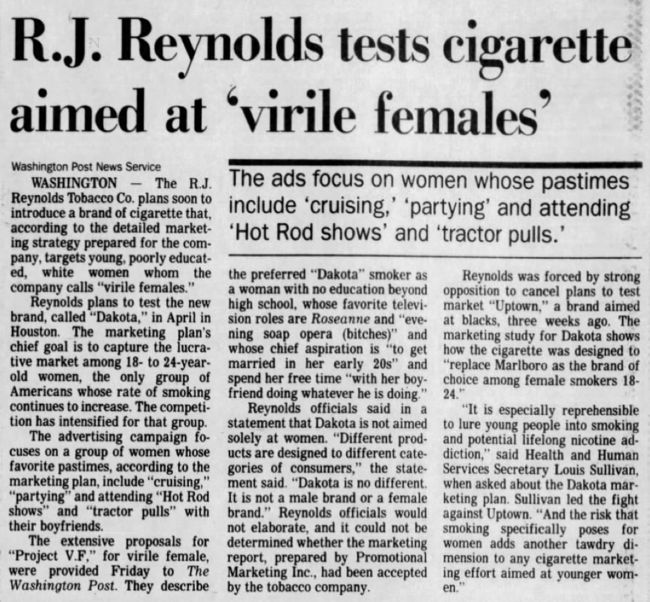
Palm Beach Post - Feb 17, 1990
Posted By: Alex - Thu Nov 10, 2016 -
Comments (6)
Category: Products, Smoking and Tobacco, 1990s
Zateeva Smokes

Florida Today - Apr 20, 1974
In 1974, a cigarette named Zateeva Smokes began to be sold in America. It was advertised on its label as having the aroma and taste of marijuana, but it contained no marijuana and produced no high whatsoever. Therefore, it was entirely legal. The name was a play on the Latin name for marijuana, Cannabis sativa. From an article in Florida Today (Apr 20, 1974):
The pack says Zateeva's sole distributor is the House of Imagery Inc. in Montclair, N.J., but the phone company has no listing for that firm. Officials say no cigaret manufacturing firm exists in that town.
Unlike Bravo Smokes (the lettuce cigarette) that I posted about yesterday, Zateeva Smokes were not intended as a harmless substitute to help smokers quit. Instead, their primary purpose seems to have been to prank cops. They allowed pot enthusiasts to stand on street corners, smoking away, and if challenged by a cop, they would inform the officer that they weren't doing anything illegal. They were simply smoking a Zateeva.
So they were essentially a gimmick, and it doesn't seem like they ever gained much popularity. The sole reference to these Zateeva Smokes that I've been able to find is the 1974 Florida Today article. And I'm not sure if it's significant that the article itself ran on April 20 (4-20). Probably just a coincidence.
More in extended >>
Posted By: Alex - Tue Sep 06, 2016 -
Comments (4)
Category: Drugs, Smoking and Tobacco, 1970s
Smoking Periwinkle
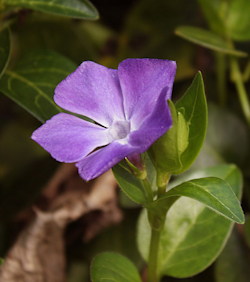
Can smoking periwinkle actually get you high? Probably. Over at erowid.org there are some reports of people experimenting with it. Though despite the scare of 1967, it never caught on as a popular drug.
Dr. George Dame, a health officer in Manatee County, warned that periwinkle could have all kinds of unpleasant side effects (such as "withering of muscle tissue") because periwinkle is the source of some drugs (vinblastine and vincristine) used in chemotherapy. However, an expert on those drugs disagreed with him. From Newsweek (June 26, 1967):
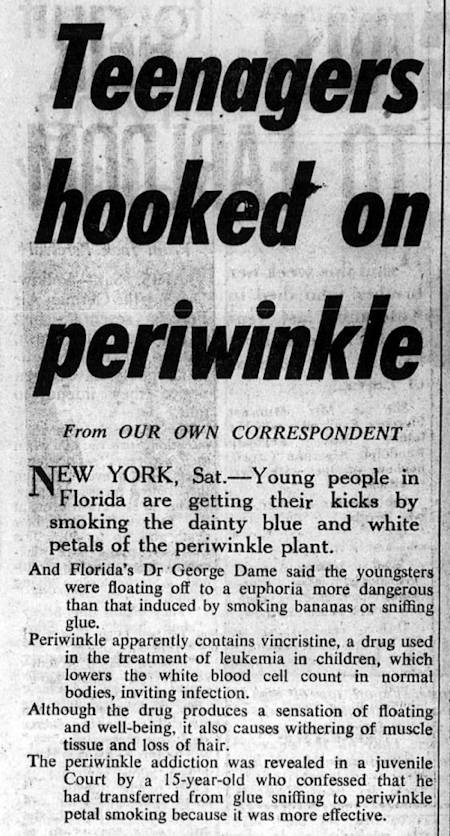
Sydney Morning Herald - Jun 4, 1967
Posted By: Alex - Fri Jan 29, 2016 -
Comments (9)
Category: Drugs, Psychedelic, Smoking and Tobacco, 1960s
Canadian Anti-smoking PSA
Posted By: Paul - Tue Aug 26, 2014 -
Comments (4)
Category: Addictions, PSA’s, Smoking and Tobacco, Cacophony, Dissonance, White Noise and Other Sonic Assaults
Consul the Chimp
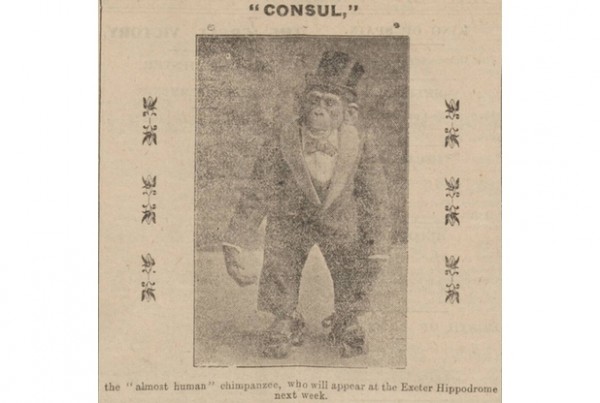
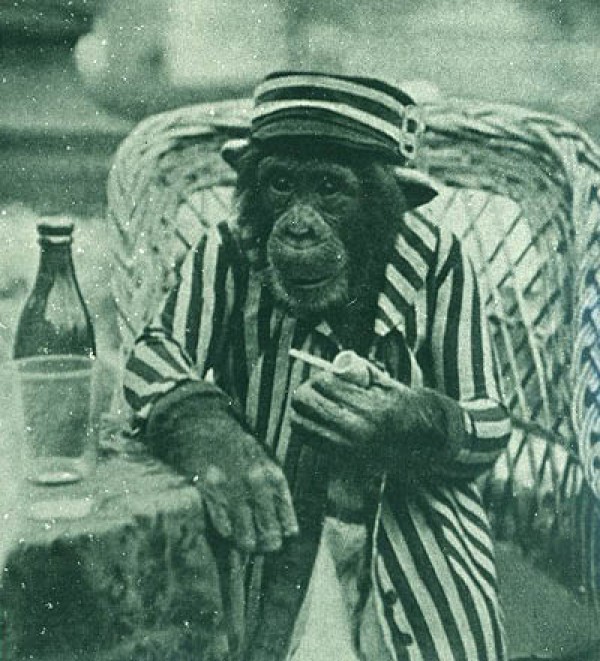
A once-famous resident of the Bellevue Zoological Gardens in England, known for his pipe-smoking habit.
Posted By: Paul - Mon May 26, 2014 -
Comments (7)
Category: Animals, Anthropomorphism, Smoking and Tobacco, Europe, Nineteenth Century

| Who We Are |
|---|
| Alex Boese Alex is the creator and curator of the Museum of Hoaxes. He's also the author of various weird, non-fiction, science-themed books such as Elephants on Acid and Psychedelic Apes. Paul Di Filippo Paul has been paid to put weird ideas into fictional form for over thirty years, in his career as a noted science fiction writer. He has recently begun blogging on many curious topics with three fellow writers at The Inferior 4+1. Contact Us |




